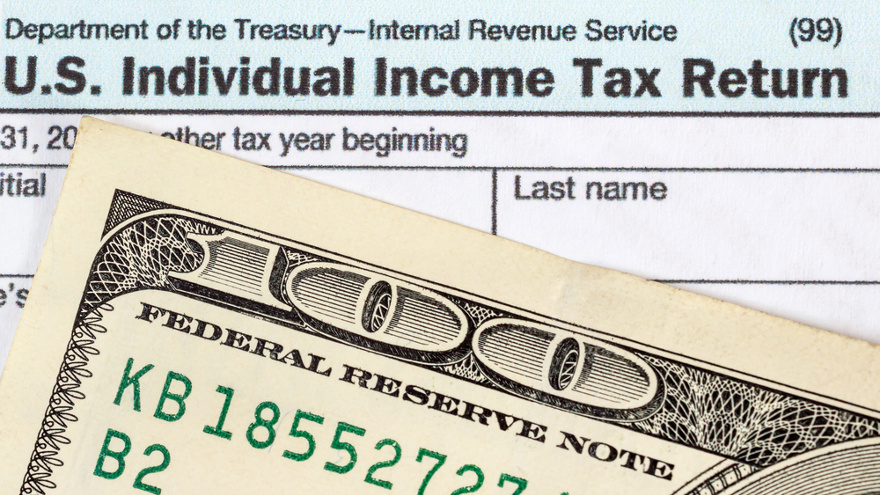Younger car shoppers rely on (dwindling) tax refunds

By subscribing, you agree to receive communications from Auto Remarketing and our partners in accordance with our Privacy Policy. We may share your information with select partners and sponsors who may contact you about their products and services. You may unsubscribe at any time.
CARY, N.C. –
Auto dealers looking forward to increased traffic at tax refund season might be in for an unpleasant surprise this year.
Last year’s tax reform legislation is part of the reason that early refund amounts are down from last year, according to a recent Autolist study. Also, younger buyers are less knowledgeable about the legislation, and those younger buyers have been the ones who were most likely to spend their refunds on a vehicle, according to Autolist.
In late January and early February, Autolist surveyed 1,838 current car shoppers to see how they planned on spending any of their tax refund on a new or used vehicle this year, if at all.
Fifty-nine percent of respondents between the ages of 18 and 28 said they planned to use all or some of their refund to get a new or used vehicle this year. That compares to just 26 percent of shoppers ages 66 and older who said they planned to do the same.
Across all age groups, 43 percent of respondents plan to spend all or some of their tax refund on a vehicle this year.
One reason for the different results between age groups is that younger buyers rely more on their annual tax refund to supplement their incomes. Older buyers with higher incomes don’t need their refunds as much for vehicles and other large purchases.
Subscribe to Auto Remarketing to stay informed and stay ahead.
By subscribing, you agree to receive communications from Auto Remarketing and our partners in accordance with our Privacy Policy. We may share your information with select partners and sponsors who may contact you about their products and services. You may unsubscribe at any time.
Another factor: Optimism. Thirty-nine percent of shoppers between 18 and 28 years old expected an increase in their tax refund. Just 14 percent of consumers over 65, however, expected their tax refund to increase.
Thirty-nine percent of consumers across all age groups expected their refund to increase this year.
If early returns are any indication, the younger crowd might be in for a bummer when they learn the amount of their tax refunds. During the first week of returns this year, according to Autolist reporting IRS data, the average tax refund was down 8.4 percent, and the number of people receiving refunds at all dropped by a quarter.
Autolist notes that much of that drop is because of the tax reform legislation.
Many Americans received a tax cut because of the legislation. But tax filers, especially if they did not change the amount they wanted withheld from their paychecks, could see a noticeable change in the size of their refunds.
Older consumers were more aware of that than younger ones, according to Autolist.
That could cause dealers to see a drop in expected business. Sixty-four percent of the over-65 group said they knew the legislation could change the size of their refund. Just 45 percent of 18-to-28-year-old group said they were aware of that.
Now, those younger buyers who had been counting on a larger refund might have to delay their trip to the dealership.
But Autolist believes that might not be such a negative development. Autolist says “experts agree” that buyers might not get the best deal on a new or used car during tax season.
The auto industry attributes strong months after President’s Day in February and before Memorial Day in May to tax refund checks, according to Autolist. Because of that demand, the company says, fewer dealers offer sales or deals, so consumers should wait until the end of May to do car shopping, Autolist says.
Younger shoppers aren’t aware of that. Fifty-eight percent of consumers 18 to 28 years old believed tax season was a good time to get a new or used vehicle, according to the Autolist survey. Thirty-two percent of respondents over 65 said it was a good time to buy a vehicle.
An average of forty-eight percent of the 1,838 respondents overall thought tax season was a good time to buy a car.
A majority of all respondents did not agree with the idea of using tax refunds to purchase a new or used vehicle. Seventy-two percent had never done that. One quarter of the respondents said they had used all or some of a prior year’s refund to get a vehicle, while 3 percent were unsure.
In another ominous sign for auto sales, the Federal Reserve Bank of New York’s Center for Microeconomic Data released its January 2019 Survey of Consumer Expectations, which showed households were less optimistic about the economy and future changes in their financial situation. Survey respondents were less optimistic about future credit availability, and many expect to be financially worse off a year from now.


